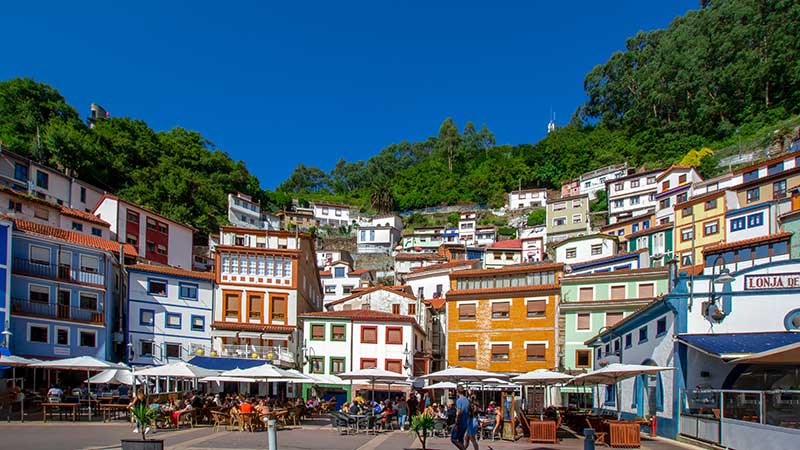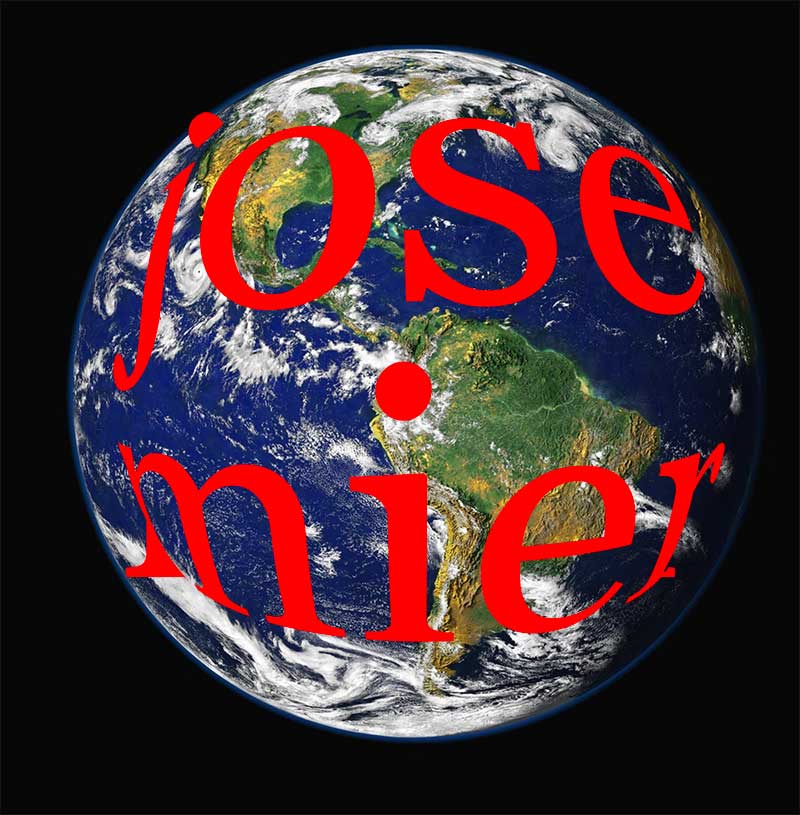More on Jose iIer’s Ancestral Home and Notable Namesakes
Jose Mier here in my Sun Valley, CA living room. As you know if you read my post on the origins on the surname Mier we probably go back to a region in northern Spain but on doing some more reseach it looks like there is more than one Mier village in Spain. Join me as I hunt down more clues to the origin of Jose Mier and family.

Nestled in the rugged landscapes of northern Spain, the region of Mier encompasses a cluster of picturesque villages that possess rich historical, cultural, and natural significance. These villages, sharing the name “Mier,” are scattered throughout various provinces of the autonomous communities of Asturias, Cantabria, and León. As we delve into the exploration of these quaint settlements, we also uncover the stories of notable individuals who bear the surname “Mier,” leaving their mark on history, art, and various fields of human endeavor.
Villages of Mier: The villages of Mier form a tapestry of rural charm against the backdrop of the Cantabrian Mountains and the Bay of Biscay. While each village has its distinct character, they share a common thread of authenticity and a deep-rooted connection to their surroundings.
- San Juan de Mier (Asturias): This village in the Nalón Valley of Asturias is known for its historical architecture and its proximity to the lush Nalón River. The centuries-old buildings and cobblestone streets reflect the region’s traditional architecture and rural lifestyle.
- Mier (Cantabria): Situated in the region of Liébana in Cantabria, this village is famed for its breathtaking views of the Picos de Europa mountains. The Monastery of Santo Toribio de Liébana, an important religious site, is located nearby, attracting pilgrims and tourists alike.
- Mier (León): Found in the province of León, this village exudes a tranquil ambiance with its verdant landscapes and charming houses. It provides a glimpse into the simplicity of rural life in this region.
These villages, while small, offer a window into Spain’s cultural heritage, providing visitors with an opportunity to experience the authenticity and serenity of rural life in the northern regions.
Notable Individuals with the Last Name Mier (Jose and others)
Beyond the geographical context, the surname “Mier” has been borne by individuals who have left their mark in diverse fields, ranging from philosophy to exploration.
- Melchor Mier y Terán (1789–1832): A Mexican soldier, explorer, and diplomat, Mier y Terán is known for his role in the Mier y Terán Report, which assessed the political situation and cultural dynamics of Texas in the early 1830s. His insights influenced Mexican policy towards the region.
- Servando Teresa de Mier (1765–1827): A prominent Mexican priest, writer, and philosopher, Servando Mier was a pivotal figure in Mexican intellectual circles during the late 18th and early 19th centuries. He engaged in theological debates, critiqued the Spanish colonial system, and advocated for Mexican independence.
- Juan de Mier y Villarreal (1794–1832): Another Mexican insurgent, Mier y Villarreal participated in the struggle for Mexican independence from Spanish rule. He was involved in various military campaigns and is remembered for his contributions to the movement.
- Rafael María de Labra y Mier (1842–1903): A Spanish jurist and politician, Labra y Mier was known for his efforts to modernize Spain’s legal system. He played a role in drafting important legislation and advocating for legal reforms.
- Pilar Mier y Terán (20th century): A contemporary artist, Pilar Mier y Terán has made a name for herself in the world of visual arts. Her works often incorporate vivid colors and draw inspiration from nature, cultural heritage, and human emotions.
These notable individuals, bearing the surname “Mier,” showcase a diverse range of contributions to society, from political activism and exploration to artistic expression and philosophical discourse.
In essence, the villages of Mier in northern Spain and the individuals who carry the surname “Mier” contribute to the mosaic of Spanish culture and history. Whether through the preservation of local traditions or the shaping of intellectual and artistic domains, they collectively enrich the tapestry of human experience
Asturias and Cantabria: Exploring the Treasures of Northern Spain
Nestled within the verdant embrace of the Cantabrian Mountains and graced by the azure waters of the Bay of Biscay, the regions of Asturias and Cantabria in northern Spain are a tapestry of natural beauty, rich history, and vibrant culture. These adjacent regions, each distinct in its character yet bound by their rugged landscapes and maritime allure, offer a captivating journey through the heart of Spain’s northern frontier.
Asturias: A Land of Green Valleys and Coastal Charms
Asturias, often referred to as “Paradise Natural,” lives up to its nickname with an abundance of lush valleys, rugged mountains, and captivating coastline. This region is an embodiment of the diverse beauty that characterizes northern Spain.
The Picos de Europa, a dramatic mountain range, forms the backbone of Asturias. These peaks, veiled in mist and crowned with snow, offer a playground for outdoor enthusiasts. The Covadonga Lakes, nestled within this range, are a stunning natural gem that reflects the serene beauty of the surrounding landscape.
Asturias’ coastline is a tale of contrasts, with sheer cliffs plunging into the ocean, pristine beaches inviting relaxation, and quaint fishing villages painting a picture of traditional maritime life. The town of Luarca is a prime example, where colorful houses cluster around a picturesque harbor, capturing the essence of coastal living.
Cider, or “sidra,” is an integral part of Asturian culture. Sidrerías, traditional cider houses, offer visitors the chance to immerse themselves in the ritual of pouring and drinking cider. The lively ambiance of these establishments creates a unique social experience.
Oviedo, the capital city, boasts a blend of modernity and history. The Cathedral of San Salvador and the Pre-Romanesque church of Santa María del Naranco are UNESCO World Heritage Sites that showcase Asturias’ historical significance. Moreover, the Camino de Santiago, a renowned pilgrimage route, passes through Asturias, adding to its spiritual and cultural legacy.
Cantabria: A Fusion of Mountains and Sea
Adjacent to Asturias, Cantabria is a land of striking contrasts, where the rugged grandeur of the mountains meets the soothing embrace of the sea. Known for its scenic diversity, Cantabria beckons travelers with its enchanting landscapes and historical treasures.
The Picos de Europa extend into Cantabria, providing a playground for hiking, climbing, and nature appreciation. The cable car ride to the Fuente Dé viewpoint offers breathtaking panoramas of the surrounding peaks and valleys.
Santander, Cantabria’s capital, is a vibrant city where modernity harmonizes with tradition. The Palacio de la Magdalena, an early 20th-century palace overlooking the bay, serves as a symbol of the city’s elegance. The Sardinero Beaches, with their golden sands and scenic promenades, invite relaxation.
Cantabria’s prehistoric caves are an archaeological treasure trove. The Altamira Caves, home to remarkable prehistoric paintings, provide a glimpse into the lives of our distant ancestors. These UNESCO-listed caves are a testament to the artistic and intellectual richness of the region’s past.
The coastal towns of Comillas and San Vicente de la Barquera exude charm. Comillas boasts the whimsical architecture of Antoni Gaudí, while San Vicente’s medieval bridges and castle stand as guardians of maritime history.
Cantabria’s gastronomy is a celebration of its maritime heritage. Seafood delicacies like anchovies and squid share the stage with hearty stews and traditional cheeses. The Queso Picón, a blue cheese with a distinctive flavor, represents the region’s dairy tradition.
Shared Heritage and Unforgettable Experiences
Asturias and Cantabria, though distinct, share an awe-inspiring landscape and a cultural legacy shaped by their history and geography. Both regions celebrate their Celtic roots through traditional music and festivals, further enriching their cultural tapestry.
The region’s festivals, such as the Descent of the Sella River in Asturias and the Semana Grande in Santander, offer glimpses into the vibrant local culture. These events bring communities together, showcasing the warm and welcoming nature of the people.
Asturias and Cantabria stand as gateways to the natural splendors of northern Spain. Their charming villages, historical sites, and breathtaking landscapes invite travelers to delve into their unique stories, forging memories that endure long after the journey’s end. Whether basking in the glow of a Cantabrian sunset, exploring ancient caves, or savoring traditional delicacies, visitors to these regions are destined to fall under the spell of their timeless beauty and unforgettable experiences. All of this is fascinating to me, Jose Mier, whose ancestors came from one or more of these regions of Spain. Perhaps someday I will get to see them in person. Perhaps you’ll beat me to it!

